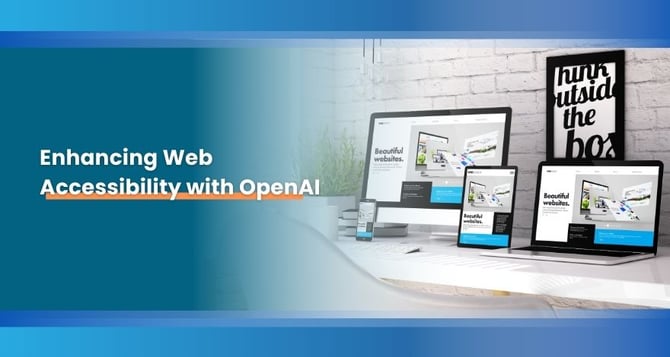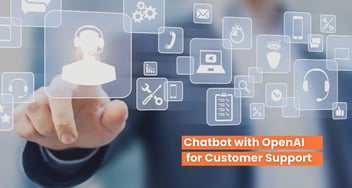Empowering Inclusivity: Enhancing Web Accessibility with OpenAI
Explore how OpenAI's language models revolutionize web accessibility. Learn how to implement a dynamic text-to-speech system using Node.js. OpenAI enhances inclusivity in digital design, making it easier for everyone, regardless of ability, to access and interact with online content. Join the journey toward a more inclusive digital landscape.

In the ever-evolving digital realm, the call for inclusivity is louder than ever. Web accessibility is not just a necessity; it's a commitment to ensuring that everyone, regardless of ability, can seamlessly navigate and interact with online content.
OpenAI, with its groundbreaking language models, emerges as a key player in the pursuit of enhancing web accessibility. This article delves into the transformative impact of OpenAI in making the web a more inclusive space, accompanied by detailed technical implementations using Node.js.
The Essence of Web Accessibility
Web accessibility is the practice of designing and developing websites and applications that can be used by people of all abilities and disabilities. It encompasses a wide range of disabilities, including visual, auditory, cognitive, and motor impairments.
The goal is to create a digital space where everyone can access and interact with information and services effortlessly.
OpenAI: The Key to Crafting Unique Apps
Turn your ideas into remarkable applications. Get custom AI solutions from our experts!
The Role of OpenAI in Inclusive Design
OpenAI's language models bring a unique set of capabilities to the table. Their natural language understanding, when harnessed creatively, can significantly enhance the accessibility of digital content.
From making interfaces more intuitive to providing tailored support for users with specific needs, OpenAI becomes a catalyst for inclusivity.
Technical Implementation: Harnessing OpenAI for Dynamic Text-to-Speech
Let's embark on a technical journey to integrate OpenAI into a web accessibility feature. Our focus here is on creating a dynamic text-to-speech system for users with visual impairments.
Node.js Implementation
1. Setting Up the Development Environment
Start by initializing your Node.js project and installing the necessary packages:
2. Express Server for Text-to-Speech
Create an Express.js server to handle text-to-speech requests using OpenAI:
3. Running Your App
Execute your Node.js server using:
Your text-to-speech system is now accessible at `http://localhost:3000/text-to-speech` or the specified port.
Applications of OpenAI in Web Accessibility
1. Dynamic Content Interaction: OpenAI models can make dynamic content more accessible by providing natural language interfaces.
2. Assistive Chatbots: Intelligent chatbots powered by OpenAI can offer real-time assistance and support, catering to users with varying needs.
3. Enhanced User Interfaces: OpenAI can contribute to creating more intuitive interfaces that adapt to users' preferences and accessibility settings.
4. Customizable Content Presentation: Tailor content presentation based on user preferences, such as font size, color schemes, and language.
Considerations and Best Practices
1. User-Centric Design: Prioritize the user experience, keeping the diverse needs of your audience at the forefront of your design decisions.
2. Compliance with Standards: Adhere to established web accessibility standards, ensuring your digital products align with guidelines such as WCAG.
3. Testing with Real Users: Conduct usability testing with individuals with disabilities to gather valuable feedback and iterate on your accessibility features.
4. Educating Development Teams: Foster awareness and understanding of accessibility principles among your development team to embed inclusivity into your organization's culture.
5. Continuous Improvement: Embrace a mindset of continuous improvement, consistently refining your web accessibility features based on evolving technologies and user feedback.
Conclusion
OpenAI's integration into web accessibility is not just a technological upgrade; it's a commitment to a more inclusive digital future. By leveraging OpenAI in conjunction with Node.js, developers can create digital experiences that cater to the unique needs of users, fostering an environment where everyone can participate equally in the digital landscape.
The fusion of innovative technology and empathetic design principles propels us toward a future where accessibility is not an afterthought but an integral part of the digital fabric we weave.


%201-1.webp)


.png?width=344&height=101&name=Mask%20group%20(5).png)







.png?width=352&name=ChatGPT%20Access%20Now%20Account%20Free%20(1).png)









